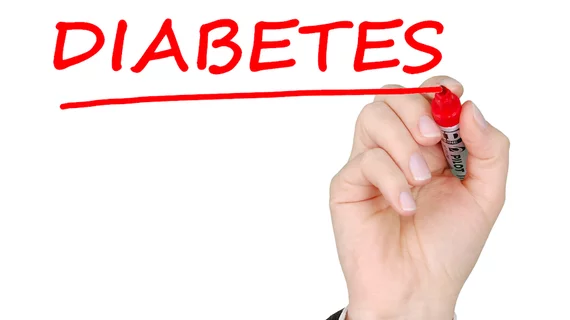Shoulder 'brightness' on ultrasound predicts diabetes with 90% accuracy
Brightness of the shoulder’s deltoid muscle on ultrasound can identify patients with type 2 diabetes or pre-diabetes with almost 90 percent accuracy, according to a study being presented at the Radiological Society of North America (RSNA)’s annual meeting next week in Chicago.
The study, led by Steven B. Soliman, a musculoskeletal radiologist at Henry Ford Hospital in Detroit, was prompted after he continuously noticed the deltoid muscle appearing bright on ultrasounds for patients who were diabetic or borderline and not taking any medications.
“If we observe this in patients with pre-diabetes and diabetes, we can get them to exercise, make diet modifications and lose weight,” Soliman said in a prepared statement. “If these interventions happen early enough, the patients may be able to avoid going on medications and dealing with all the complications that go with the disease.”
For the study, Soliman and colleagues collected 137 shoulder ultrasounds from patients with type 2 diabetes, including 13 patients with pre-diabetes, and 49 ultrasounds from obese patients without diabetes.
The ultrasounds were shown to two musculoskeletal radiologists blinded to the images, who then classified the patients based on the brightness of their shoulder muscle as either "normal," "suspected diabetes" or "definite diabetes." A third musculoskeletal radiologist acted as an arbitrator in the cases where the other two radiologists disagreed, according to the researchers.
The radiologists correctly predicted diabetes in 70 of 79 patients (89 percent), the researchers found the level of accuracy to be surprising. Additionally, the 13 pre-diabetic ultrasounds were assigned to either the “suspected diabetes” or “definite diabetes” categories.
“The CDC states that pre-diabetes affects an astonishing 84.1 million adults, or nearly 34 percent of the adult U.S. population, and an overwhelming 90 percent of these people are completely unaware of their pre-diabetic status and are at a high risk of developing type 2 diabetes,” Soliman said.
The researchers also noted the reasons behind brighter-appearing shoulder muscle on ultrasound among patients with diabetes may be due to low levels of glycogen—a main source of energy for the body stored in the liver and muscles—which is commonly found in patients with diabetes whose muscle glycogen levels are decreased by up to 65 percent, according to the release.

